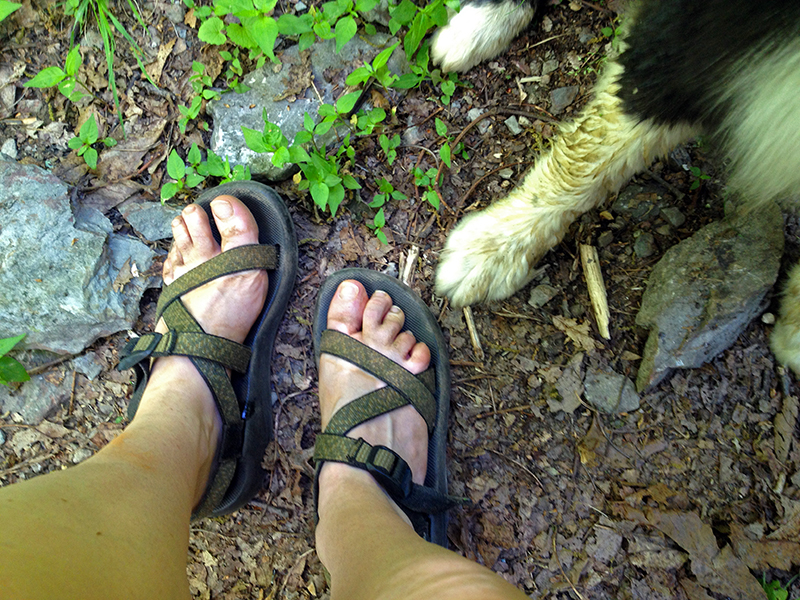June 9th, 2015 §
today, banging out 1,000 words about a lawnmower for Horticultural Mechanisation Principles while trying not to giggle. If my writing professors could only see me now, I’m sure they’d be proud of just how eloquently I can describe the sinuous curves and shiny bonnet of a brand new ride-on. To say nothing of the stunning sense of power felt under the seat as one shears through acres of green Scottish turf.
If this horticulture career fails, maybe I can get a job writing copy for John Deere?
May 28th, 2015 §
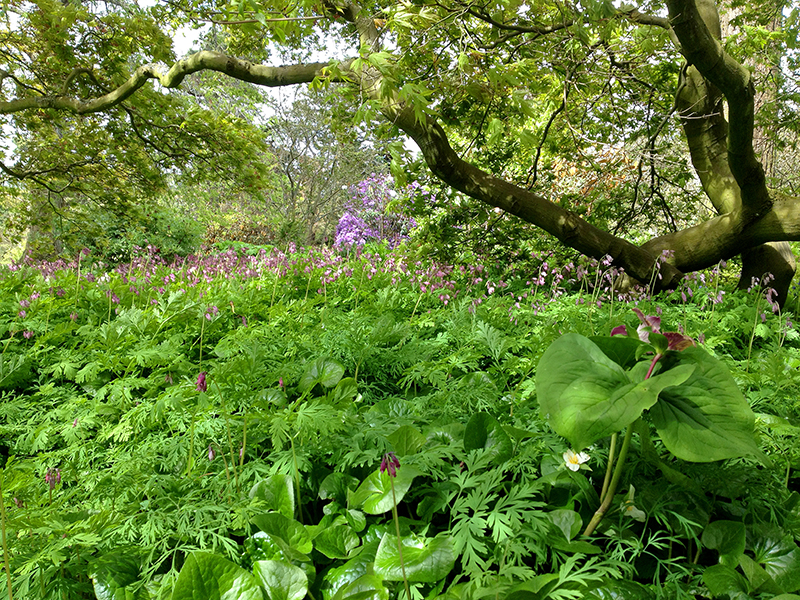
And to think I used to sit in a desk chair in front of a computer in a windowless office all day.
No thanks.
I’ll sit in the dirt any day, and do the best work of my life.
April 9th, 2015 §
The past week began with brutal wind-driven snow showers and has ended with temperatures edging into the high 60sF under blue skies and streaming sun. I suppose it’s like spring everywhere, showing two faces as winter reluctantly cedes to the inevitable warmth and light. And the light! Since the clocks sprang forward a couple of weeks ago I’ve been marveling at how long the days are now, with light past 8:00 p.m. What a change from winter, when the world went dim at 3:30 in the afternoon and I went to school each morning in the dark. And the days will continue to grow longer until late June, until it is freakishly light late at night thanks to this northern latitude. No wonder there are aisles of blackout curtains appearing in the local shops.
The return of the light, and some decently warm temperatures, has me back out plant collecting. As the ground wakes up, more and more plants are showing themselves to me. Today I walked to Blackford Hill and the first thing I saw was an orgy. The warm and shallow water of the pond was teeming with toads. I watched one randy fellow swim from one potential mate to another, slipping up behind each in a fumbling wet embrace that was usually deflected in a kicking swirl of muddy water. He could have taken a lesson from this persistent fellow who rode his indifferent girlfriend all the way down the path in front of me as I sat eating lunch.
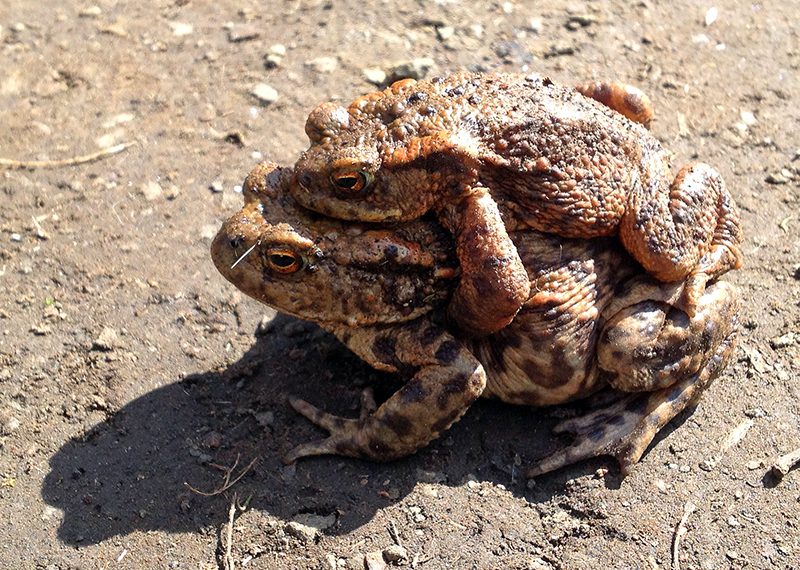
The toads aren’t the only creatures with spring fever. The geese were swimmingly paired and the swans sat preening on their nest.
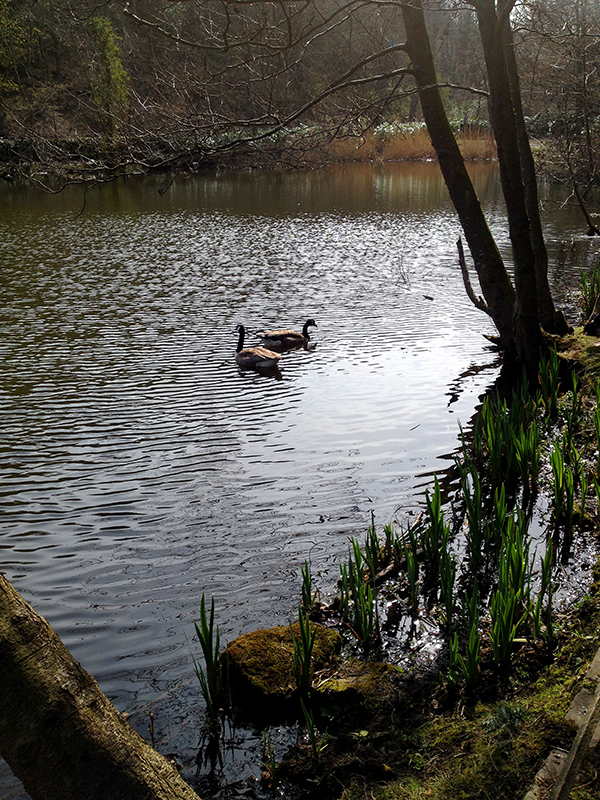
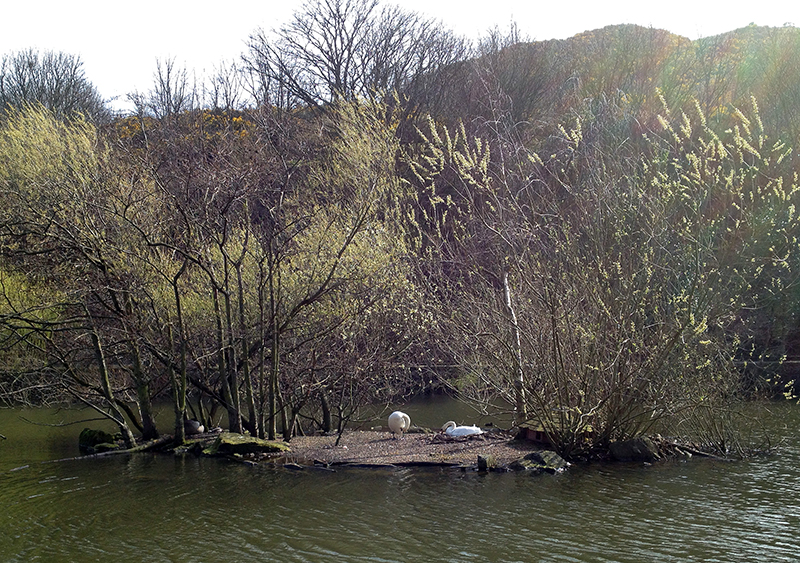
And I’ve got spring fever too. The sunlight is intoxicating, and I have dreams of garden parties, picnic blankets, and park barbeques. The plants are returning, and the gardens are even more a place of wonder and education. I don’t think I’ve ever been more excited for a spring, and so full of joy at the return of the light.
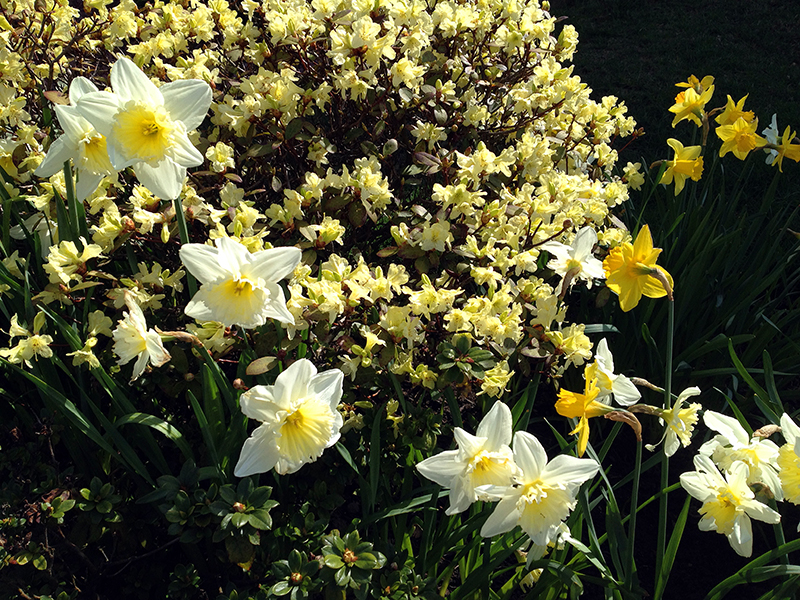
March 9th, 2015 §
Living in Edinburgh it’s easy to forget that it’s actually a pretty small city surrounded by some beautiful farmland and countryside. I got my first taste of rural Scotland when one of my classmates invited a few of us Botanics folk for a weekend house party at his place on a working cattle farm about 45 minutes outside of town. It was absolutely lovely to be holed up in a cozy home being plied with delicious food and drink for two days. It certainly didn’t hurt that my host is a former chef at Michelin-starred restaurants. I ate the best food I’ve had since moving to Edinburgh.
It was a very late night Saturday, up many hours later than I’ve been in years. But even with two hour’s sleep a few of us rallied for a long after-breakfast walk, and I thought you’d might like to see a more rural side of Scotland.
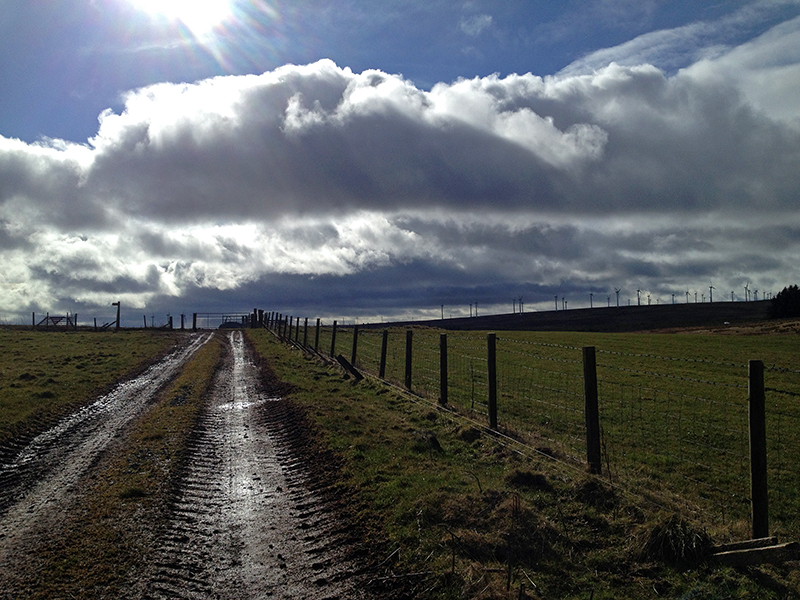
At the top of a great hill behind the farm was a wind farm, furiously spinning in the gusts.
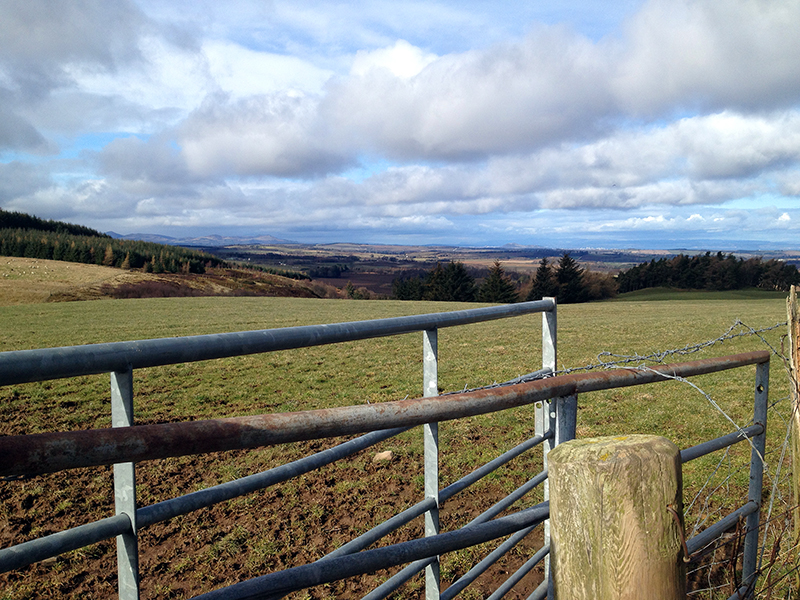
A view northwest to the Pentland Hills, at left, and over the Firth, at right. The lump in the middle distance is Arthur’s Seat.
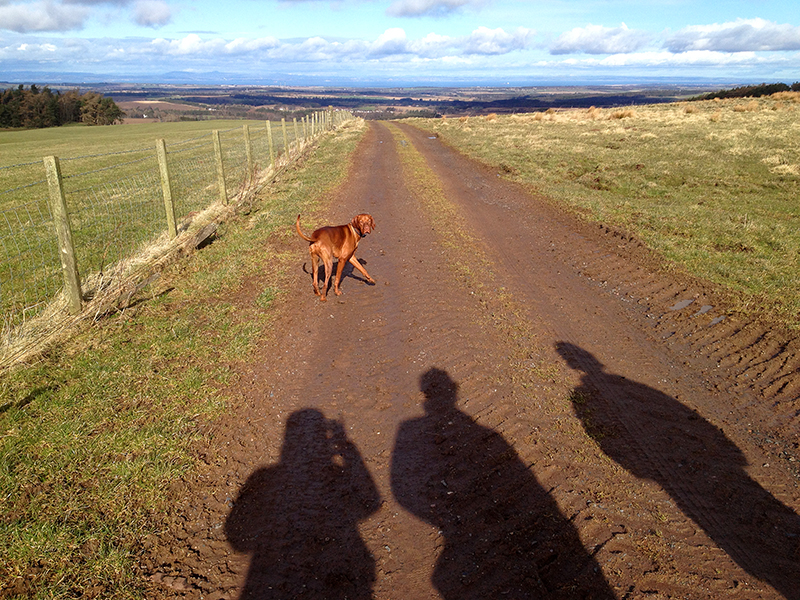
Walking back down the hill the Firth stretched out in front of us as a blue ribbon. Beyond it were snow-topped mountains.
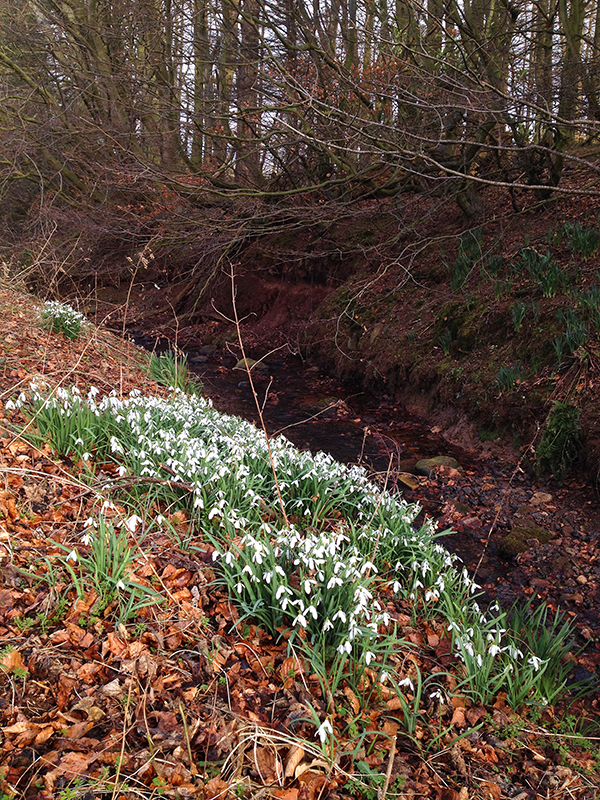
Naturalized snowdrops (Galanthus nivalis) alongside the creek, or “burn” as my Scottish friend corrected me. Beyond were thousands of daffodils just about to bloom.
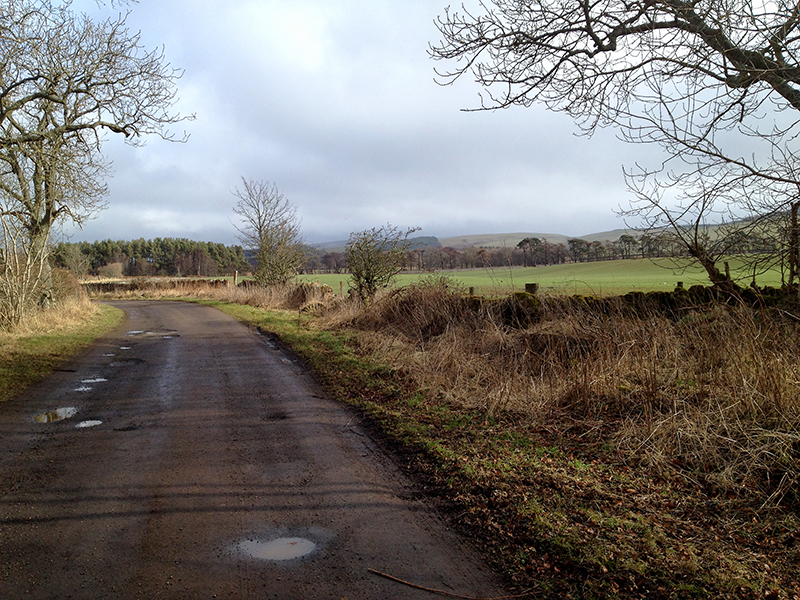
As we were walking along, most of our conversation was about school and plants. We kept sharp eyes peeled for plants to add to our pressed plant assignment, and it was absolutely wonderful to be in the company of engaging, inquisitive friends whose interests were right aligned with mine. Our geeky Latin-speak would have put some people off, but here we could relax and practice our new language. It was a very profound moment for me, to be able to revel in the safety and stimulation of new and wonderful companions. After a lifetime of learning about plants on my own, I am thrilled to have found my tribe.
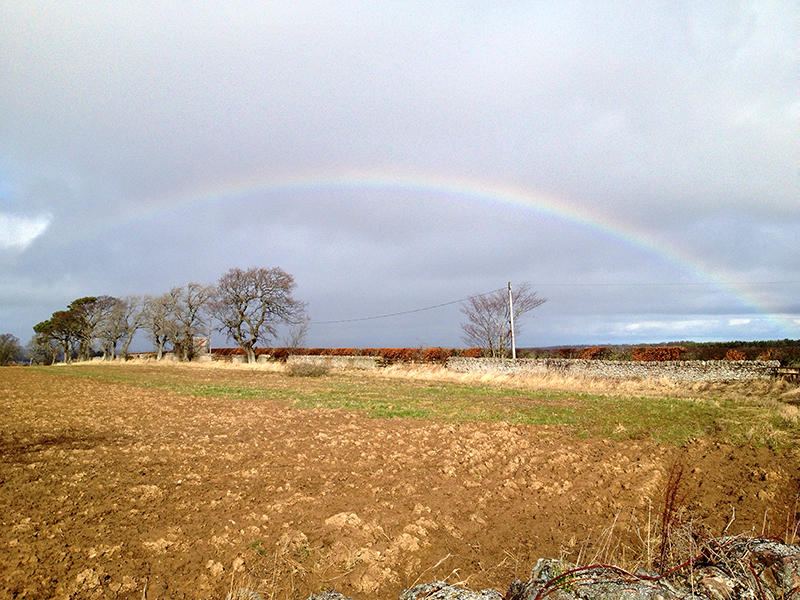
The country roads were lined on either side with beech (Fagus sylvatica) hedges whose coppery leaves glowed in the sun. Hedges are such a nice, attractive alternative to fences, and provide so much safe habitat for birds and little creatures.
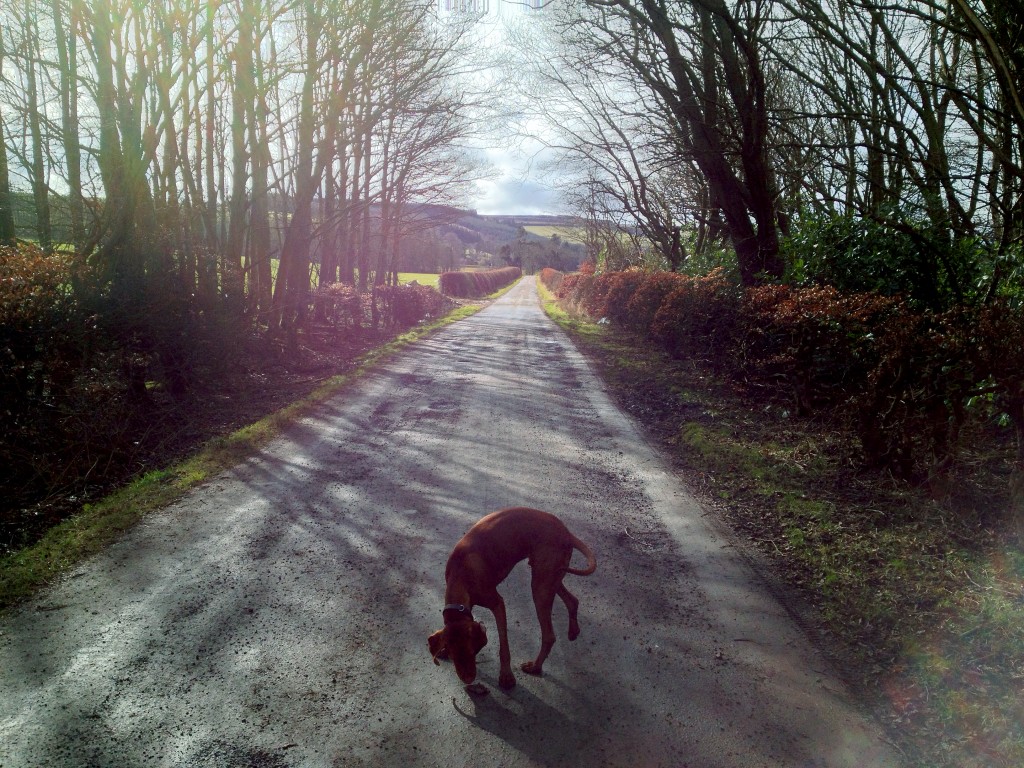
I returned from the country feeling completely refreshed, like I’d had a vacation. It was wonderful to be back in my native habitat for a bit, and to see some more of this lovely part of the world while sharing passions with some pretty cool folks. I am incredibly grateful for the experiences I am having in Scotland, and each day those experiences deepen and become more amazing as I move further into this new chapter in my life. Exciting times, can’t wait to see what’s next.
March 4th, 2015 §
This morning I put on my botanist hat and headed to the east side of town to begin one of the year’s biggest assignments: Locate, identify, harvest, press, and mount 35 native British plants as herbarium specimens. It sounds like a bit of a faff, I know, but it’s actually proven quite challenging for many reasons, the first being that I am not familiar enough with the local flora to identify as many things offhand as I could back in the U.S. So I haul wildflower and plant i.d. books into the field with me, but those are no real picnic to decipher. Second, so many plants that one might believe are native are, in fact, introduced. A prime example is the little snowdrop, Galanthus nivalis, which to me and many others is emblematic of late winter in British woodlands. However, it was introduced in the 16th century and then naturalized until it was found in the wild in the 18th century.
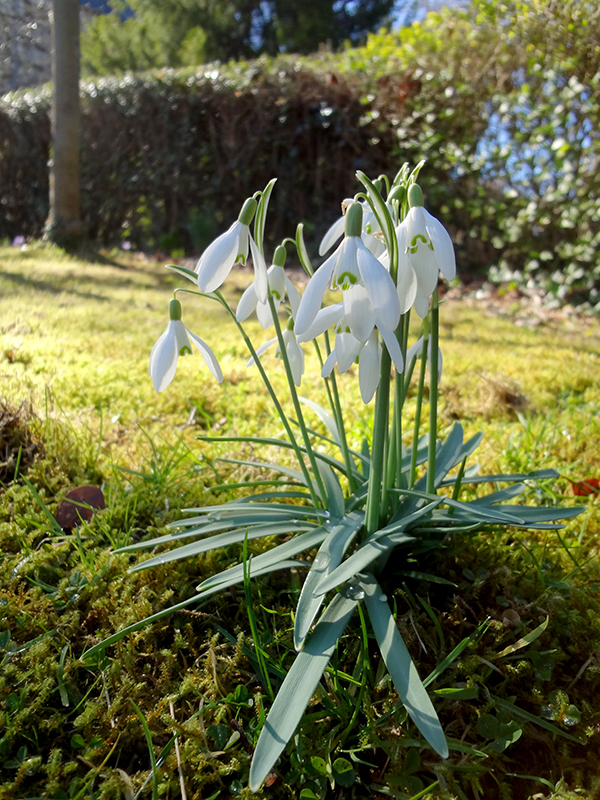
Finally, the time of year is a challenge as March is just too early for most plants to be actively growing let alone flowering, which limits what I can successfully identify. The assignment is due in May, and it takes weeks to properly dry herbarium specimens so they can be stored without rotting.
So I figured I’d better get cracking, even with these odds against me. I packed a picnic lunch with a roast pork and chutney sandwich, filled a flask of hot tea, chucked my secateurs into my backpack and headed in the direction of Duddingston Loch, a lake and bird reserve south of Arthur’s Seat.
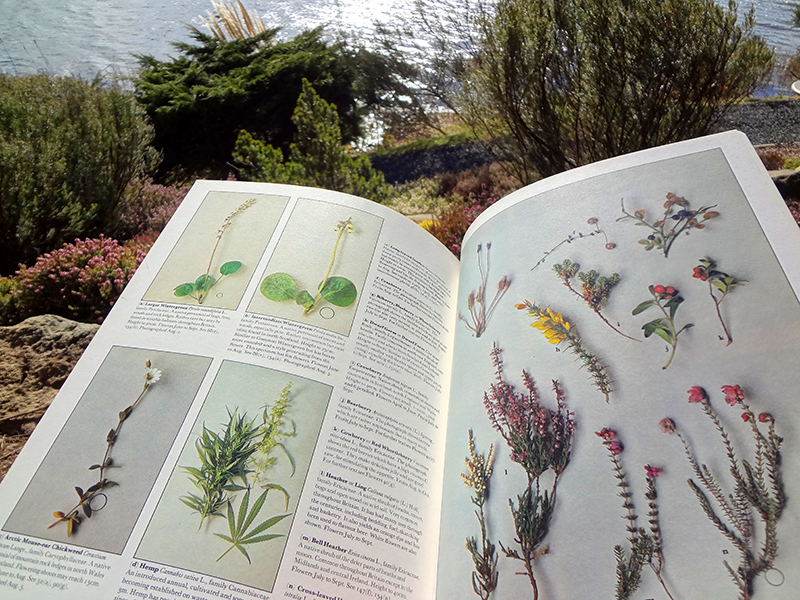
I tromped some woodland on the way, and cut a bits of holly and ivy (yet unidentified) and Scotch Broom (Cytisus scoparius) before I stopped off at Dr. Neil’s Garden to eat my lunch overlooking the beautiful loch. The Pentland Hills in the distance were still covered in yesterday’s snow, and the streaming sun, shimmering water, and myriad swooping and singing birds made for a perfect picnic.
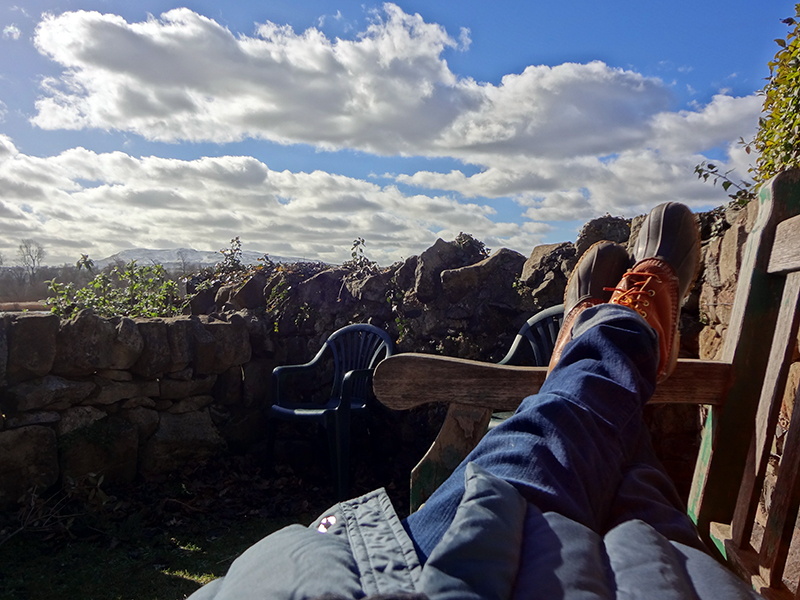
I made my way up the garden to a sheltered nook with a great wooden bench. It was warm in the sun, and I lay down. Watching the clouds skid across the sky made me so mellow I fell asleep for at least an hour. I can’t remember the last time I slept outside—I was entirely relaxed.
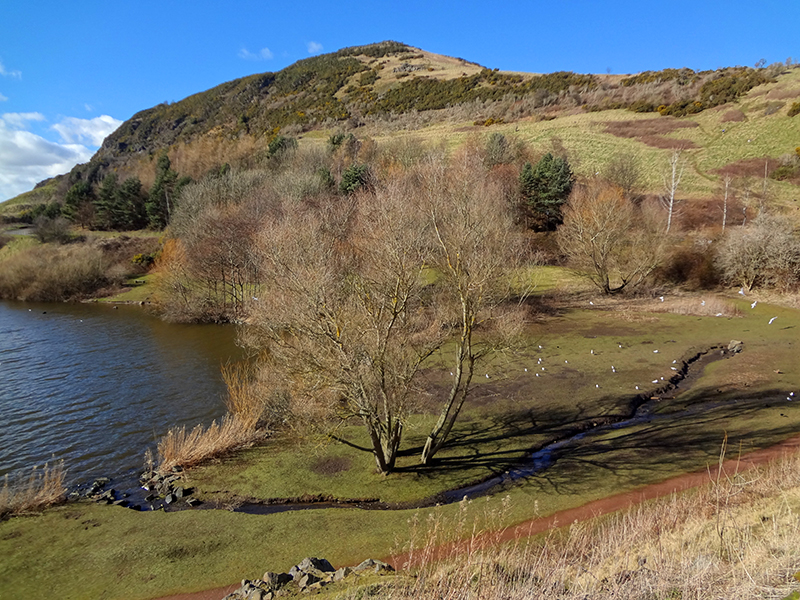
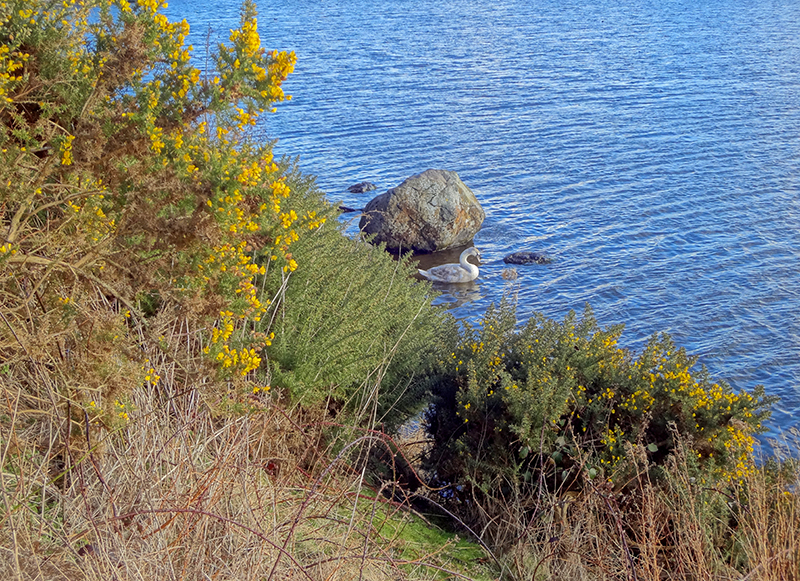
When I woke up I hopped a stone wall and ambled around the loch, climbing amongst the spiney gorse (Ulex europeaus), which of course I cut for my assignment despite being prickered to bleeding. I scrambled up some rocks and found myself on an overhang high above the loch, discovering a beautiful feather along the way. Pheasant?
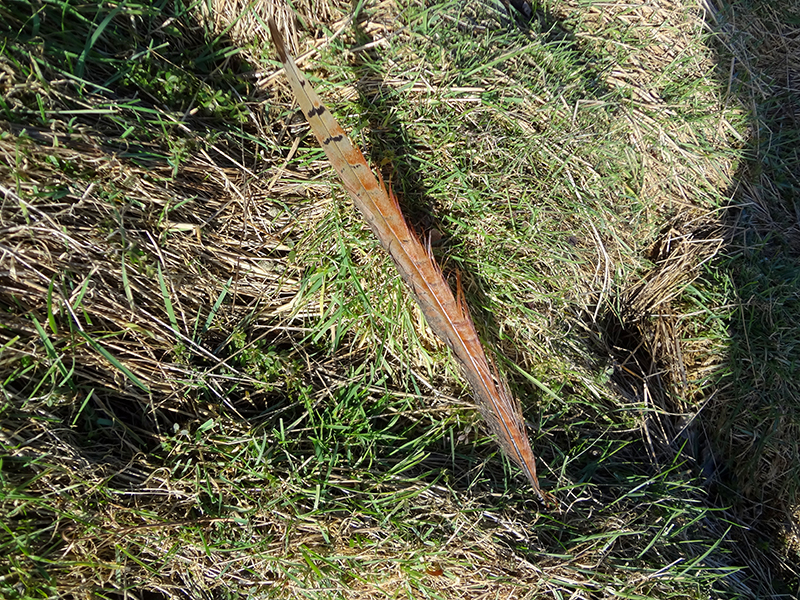
The top of the hill was a great spot to watch the geese, swans, seagulls and other little birds swim below.
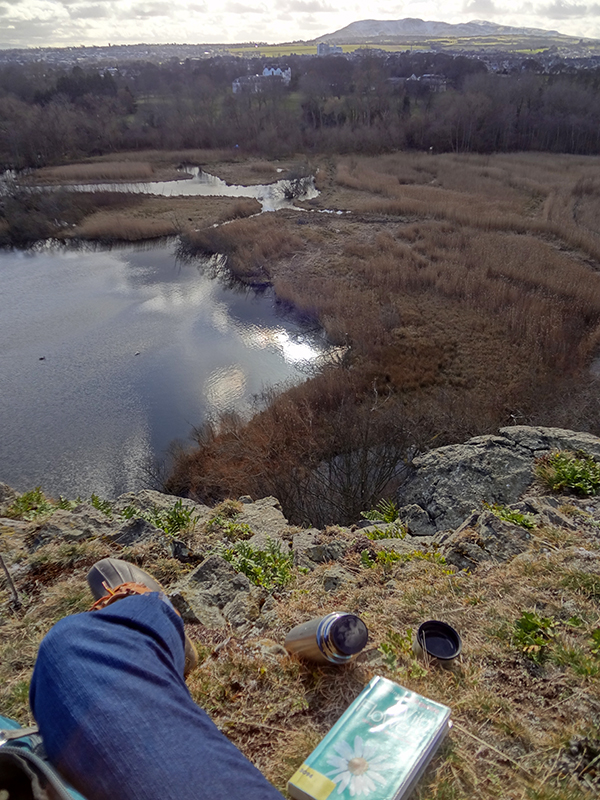
As I was drinking my tea I saw two huge grey herons fly side by side to their nest in a brushy little peninsula. It was an amazing sight, something I’d never seen before—a pair of herons on the nest. It’s egg-laying time. Wish I’d had binoculars!
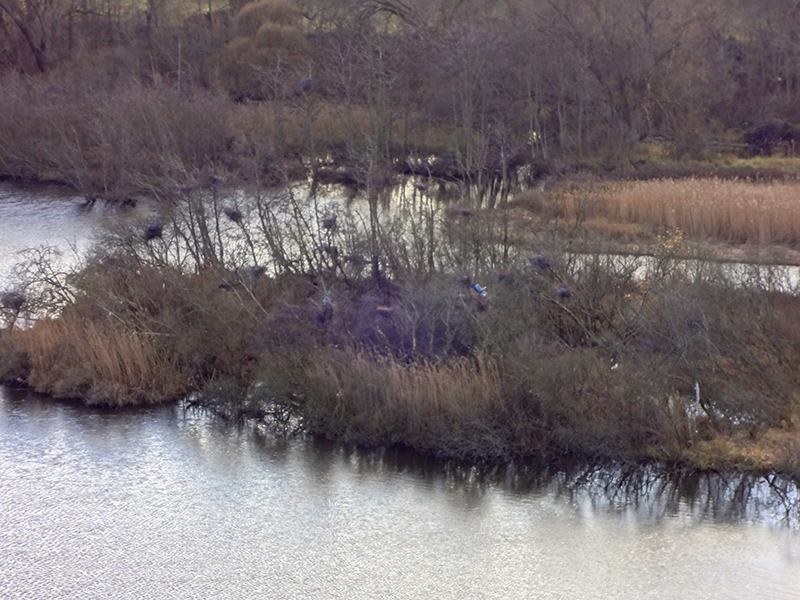
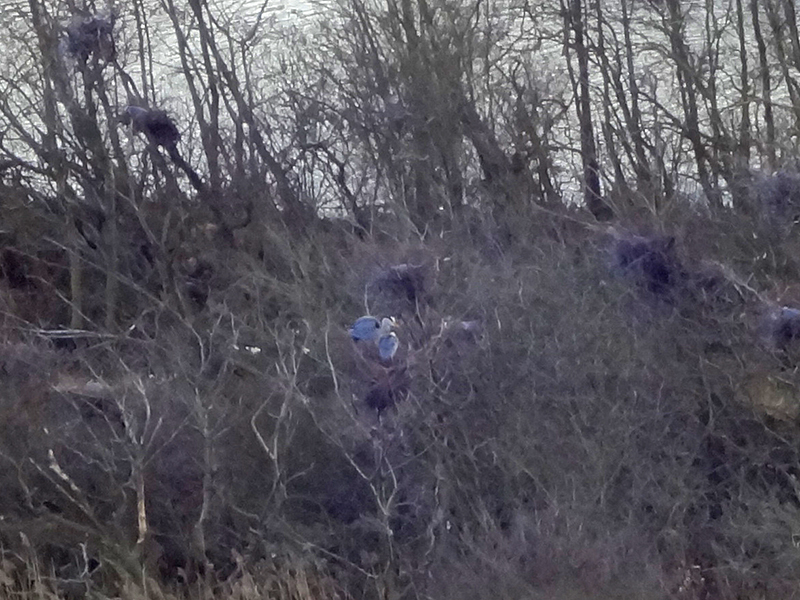
So it turns out that the life of a plant collector comprises a little hiking, lots of fun thinking about plants, a picnic, a nap in the sun, and some birdwatching. It’s a good life, and added up to one of my favorite days yet in Edinburgh.
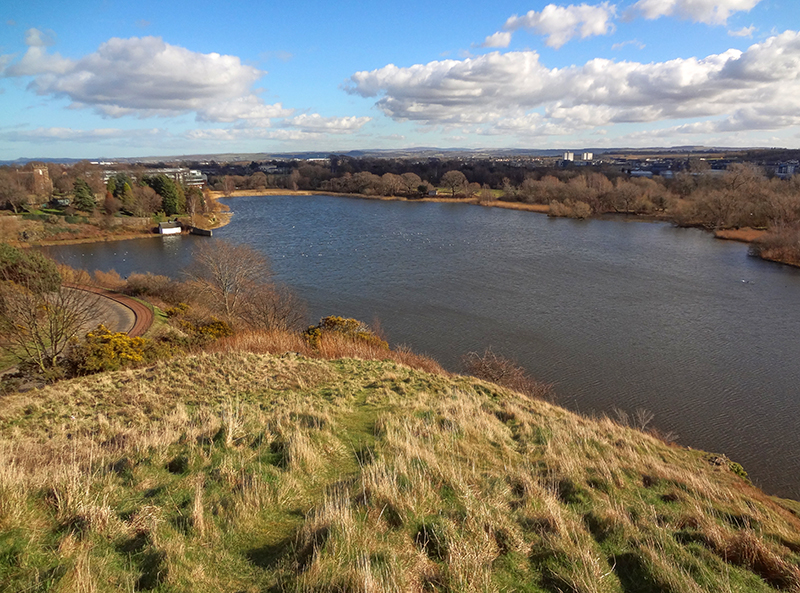
February 27th, 2015 §
Yesterday our nursery production class visited the Inch Nursery, where all of the bedding plants used to decorate the city of Edinburgh are grown. I was really struck by the huge nursery tables filled with seed-starting trays. Each module is no bigger than a centimeter squared and yet every one held a tiny growing seedling just a millimeter or two tall. These are the beginnings of new life, and I stood in front of all that potential and felt like there’s so much to look forward to with the coming of this spring.
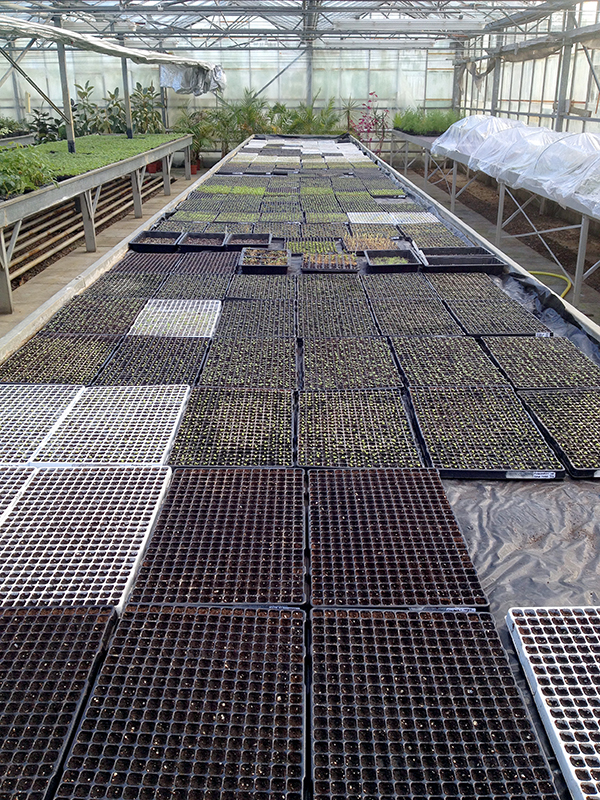
My classmates and I spent the afternoon potting up thousands of bedding geraniums, standing and chatting and laughing at a long bench full of compost. It’s mindless work, and essential to do quickly and efficiently. But it’s lovely to get lost in the feeling of compost under my hands. Scoop, dangle a young plant over the pot, one scoop, two scoop, tap the pot once on the counter and on to the next. It’s a flow activity if ever there was one.
I am not sure bedding geraniums are anyone’s favorite plant, but these are destined to bring bright color to what the Rough Guide just the other week voted the fourth most beautiful city on the world. That I had anything to do with making something pretty for millions of people to see is entirely satisfying, especially when that something pretty began life as a dry little speck shoved under compost, with hope.
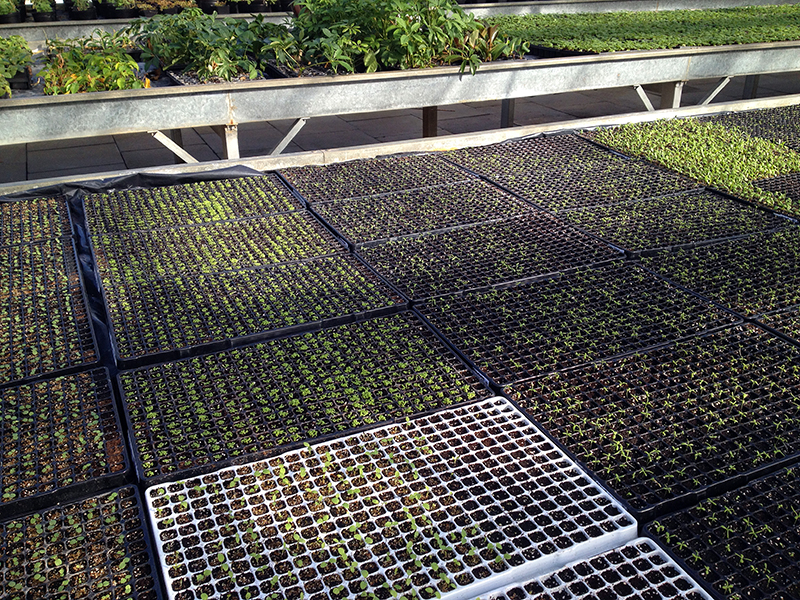
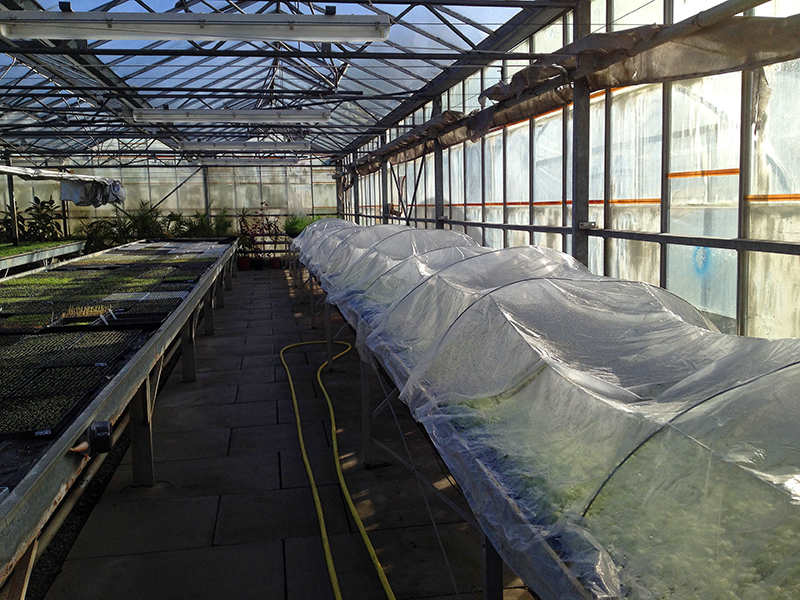
And also with shovelfuls of hope, here’s a little shout-out to the person who at 7 this morning gave me the best news I’ve had in months. So happy and excited for new adventures in our future, couldn’t stop grinning all day. XOXOXOXOXO!!!
July 25th, 2014 §
Monday I was on the mountain again, hiking with three dogs. My companion and I stopped into a swimming hole and were tossing sticks in the water for the dogs to fetch when we realized we were directing them right toward a dark snake sunning itself on a rock in the river. I took this photo before we spotted the snake:
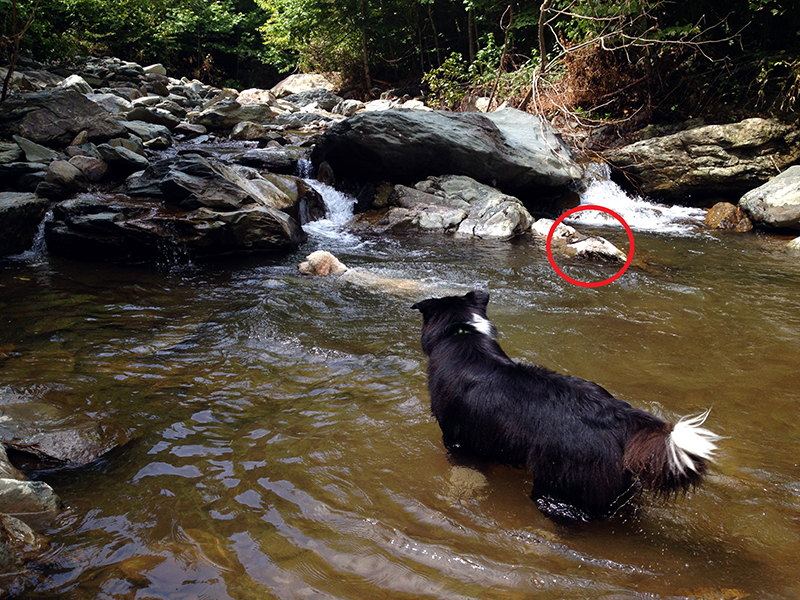
When we called the dogs back and went to investigate, the snake slipped into the water and swam away to rest in some brush downstream.
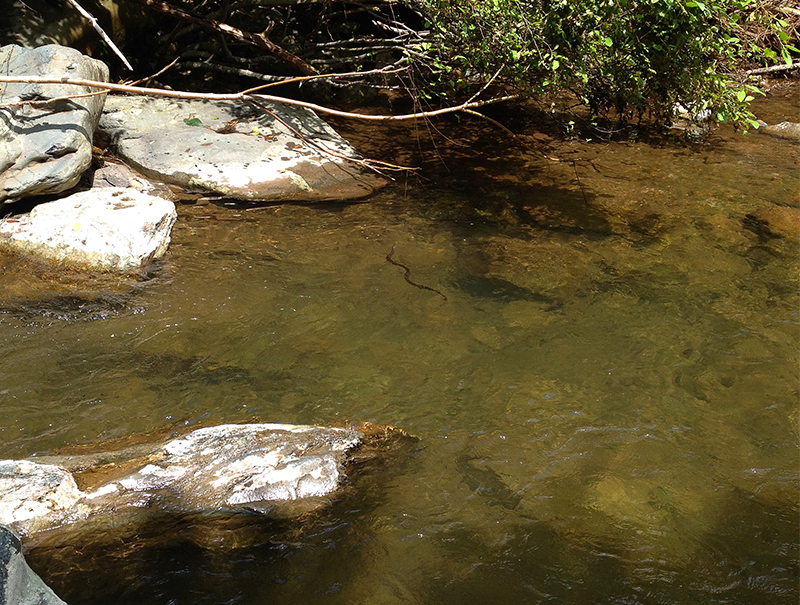
I think it was a northern watersnake (Nerodia sipedon). This is neat—it’s name is derived from the Greek neros meaning “flowing” or “liquid” and dia meaning “through.” Sipedon is derived from the Greek word sepedon which means “a serpent whose bite causes mortification.” Apparently these buggers have a mean bite and will use it if provoked. In fact, my Guide to the Snakes of Virginia lists the northern watersnake’s name translation as “nasty bite water snake.” I am glad we called the dogs away before they found it and even more glad to not be in the water when the snake swam by!
I was also happy it wasn’t one of the two poisonous snakes that live in my backyard mountains: the copperhead and the timber rattlesnake, both of which I have encountered while hiking these trails—sometimes by stepping over them whilst hiking!
July 20th, 2014 §
After the interminable cold of last winter, I am making a conscious effort to gorge on summer with both beautiful, fresh foods and warm-weather experiences. Already it’s the end of July: I saw my first reddening maple this week and the locust trees are browning out—both surefire reminders that we’re slipping toward darker, colder days.
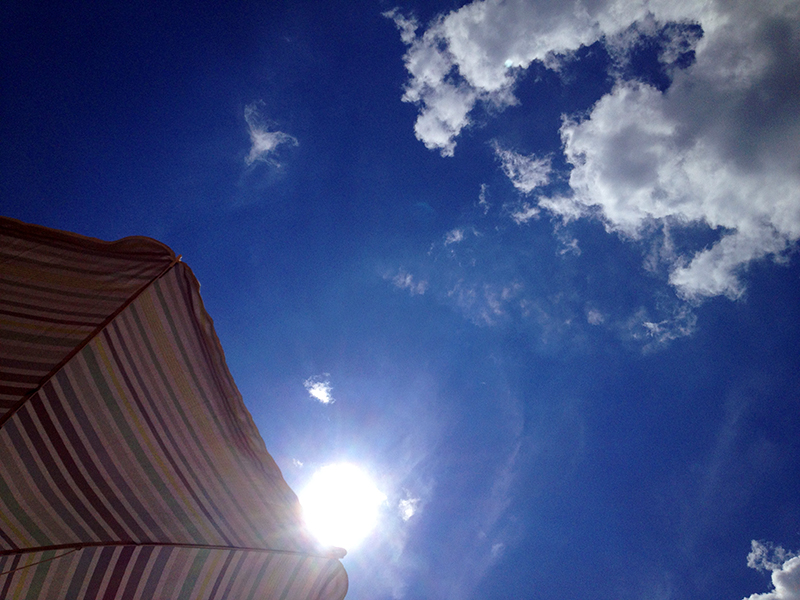
Last week I spent the afternoon at a nearby lake beach, swimming with a friend and her three small children. It was so much fun but what a workout supporting two nonswimming kids at a time in the water while making sure no one drowned! I brought about ten pounds of cut-up watermelon and we polished it off. Sandy watermelon definitely screams summer.
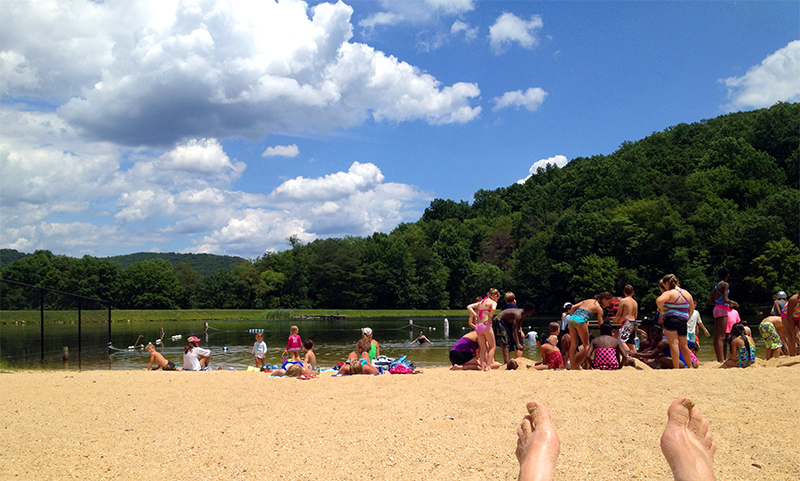
Then Friday I took a date and his dog hiking in the mountains. Tuck got to swim and run trails all day with the first female dog he’s spent much time with, and I think he’s in love.
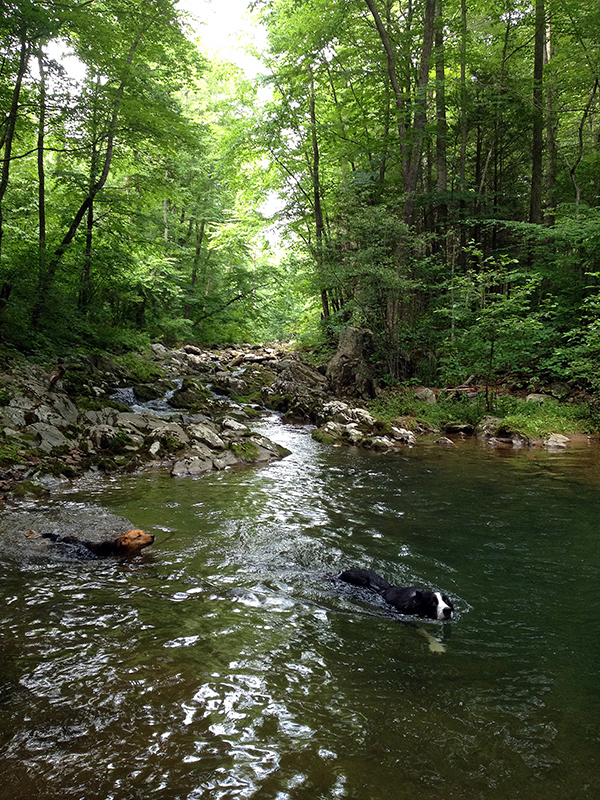
Humans and canines enjoyed a big swimming hole in a shady, mossy glen way up on the mountain, and during our picnic I met a new-to-me butterfly, the Zebra Swallowtail, that flitted around us for hours. It was my favorite colors—pale aqua and coral. It felt great to spend two days in a row swimming in natural bodies of water.
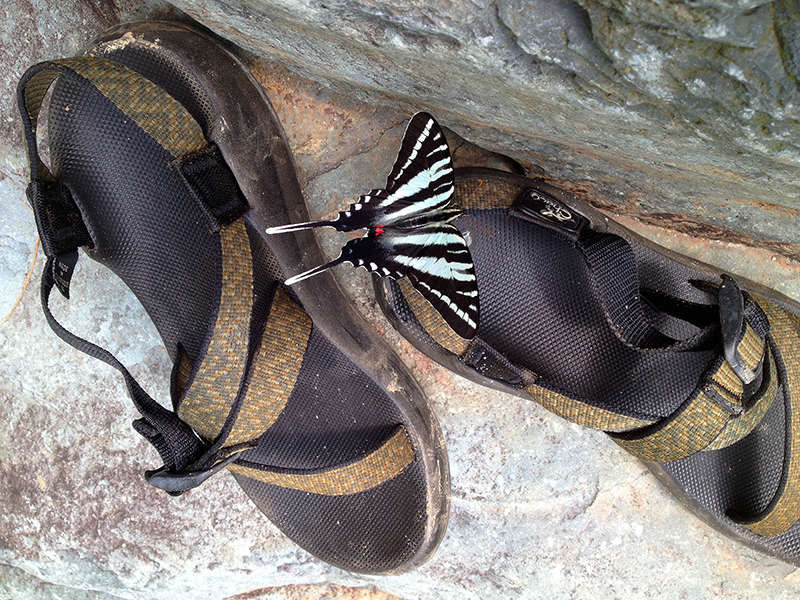
Yesterday was cloudy and cool, so I cooked all afternoon in front of the open windows, listening to the bird life outside. I roasted a bunch of cherry tomatoes, which are ripening in overwhelming succession, caramelized onions for about 45 minutes, and blanched the year’s first little “Nickel” green beans. All that plus a handful of chopped basil and some shredded provolone went into a quiche made with my chicken’s own eggs, and it was the best quiche I’ve ever made. And it didn’t even include my usual bacon or sausage!

I think, after years of experimenting, I’ve found a good crust recipe. I’ve never been particularly in love with any of my crust recipes, but this one worked perfectly. And it’s so easy I can write it here from memory:
145 grams of flour
1 stick of butter, roughly chopped into 1/8″ pieces (my butter was frozen, and it was fine)
1/2 tsp. kosher salt
3 tbs. ice water
Spin flour and salt in food processor, then add butter and process to coarse crumbs. Dump in all the ice water and then—here’s where it goes against other recipes I’ve used—process regularly for about 30 seconds. It will feel like you are overprocessing, but the crumbs will come together into a perfectly smooth dough right at 30 seconds. Stop as soon as that happens, take out, shape into a disk and chill. Overnight is recommended but I just did it for an hour and it was still okay. Then roll out, dock, and blind bake for 15 min at 450 degrees. Cool, fill and bake again with whatever you want in it. Easy—and a life victory to have finally lit upon a recipe and technique that worked well!
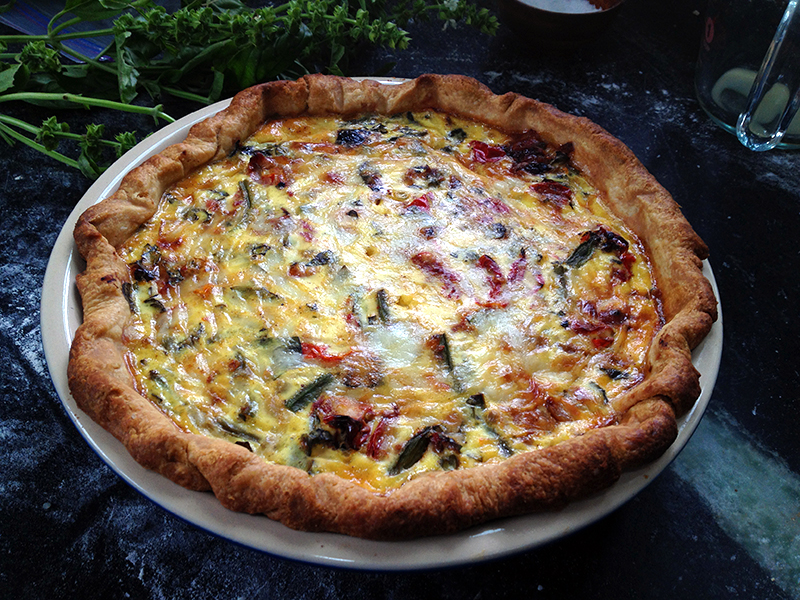
While the quiche was baking I threw together a couple of jars of refrigerator pickles. We have entered the time of year when it’s hard to keep up with the garden’s output, but I love the challenge of having to turn tons of produce into meals.
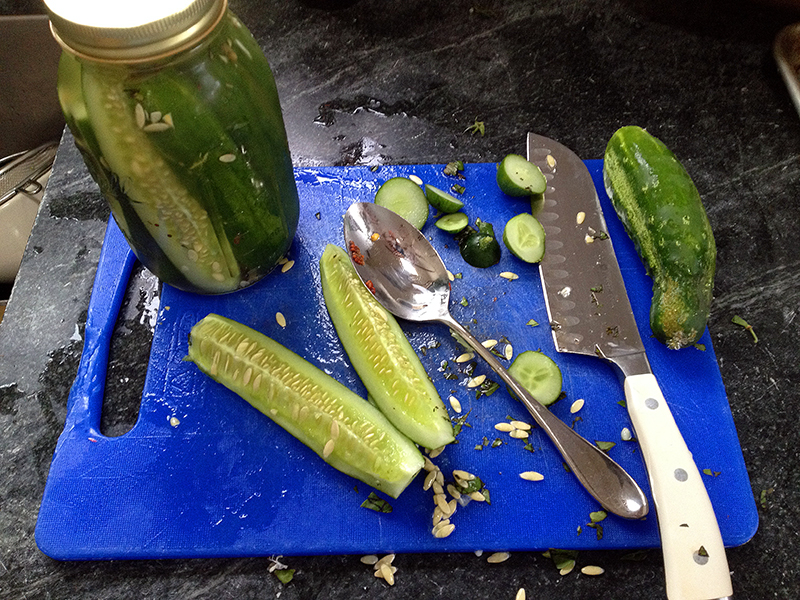
Speaking of which, my garden/kitchen task today is to shred and freeze squash. I think I will also attempt a savory zucchini bread—the weather is so cool that it’s a good weekend to have the oven running!
And then maybe, hopefully, my dog and I will find our way to a river. Because it’s summer, and the season for swimming.
July 18th, 2014 §
Well, there are lots of cool chickens in the world, but this one is pretty neat. This week my mom and I were driving around the Shenandoah Valley and found a lavender farm. There were a bunch of beautiful chickens walking around, but this one was exceptional.
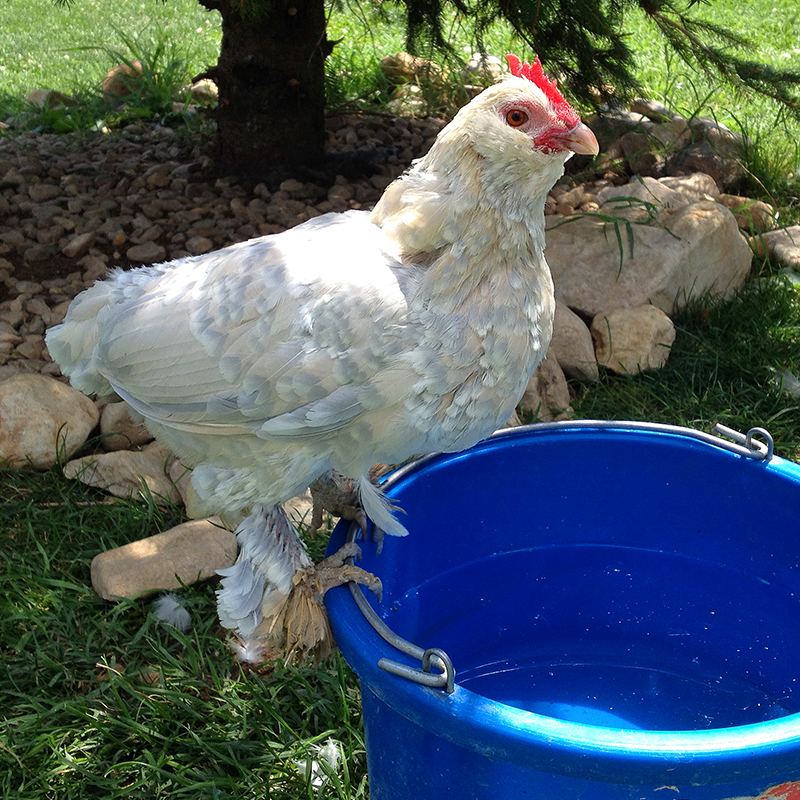
She was a tiny little girl, about the size of a 14-week-old standard chicken, and her feathers were the most remarkable opalescent porcelain blue, buff, and pearly white. She had crazy fancy feathered legs. She made fantastic little noises and was so charming I wanted to stick her in my pocket and smuggle her home.
I figured out that she’s a Belgian d’Uccle. I’d love to have a few of this bantam breed some day, even though I am not sure how they’d do housed with the big guys. So many chickens, so few resources to collect them all!
Do any of you have insight about keeping d’Uccles?
June 7th, 2014 §
Last week I took the first hike of summer with a visiting friend and Tuck. We did about 9 miles straight up the Blue Ridge from Sugar Hollow to the Blue Ridge Parkway and back down.
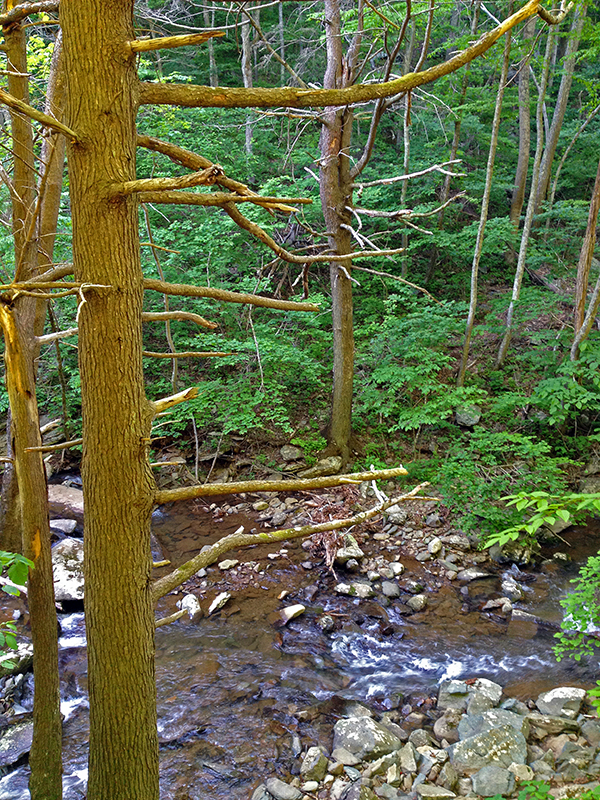
Of all the mountains I’ve lived near and climbed, all across this country, there is something so comforting about the Blue Ridge. Probably that feeling comes from growing up here, from these being my “native” mountains. The hike we took last week began as one I used to take with high school friends, up past a swimming hole where we’d go to cool off in the summer. I think there is something very sweet and wonderful about walking, as a 34-year-old, the same trails I walked at 17—only this time with a friend made when I was 24 and the dog I never dreamed of having as a teenager.
Up near the ridgeline it was still spring, and the wild azaleas were fragrantly blooming.
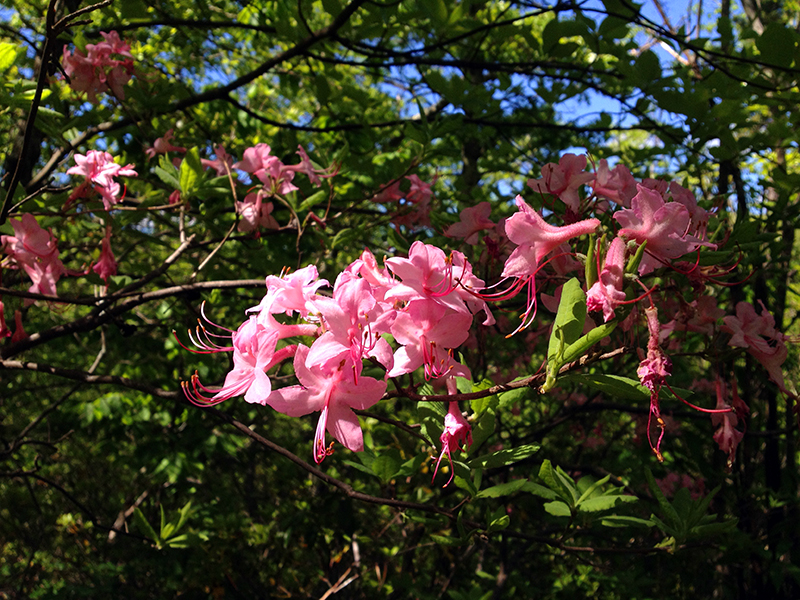
The mountain laurel, with its buds that remind me of just-exploded fireworks, had yet to flower.
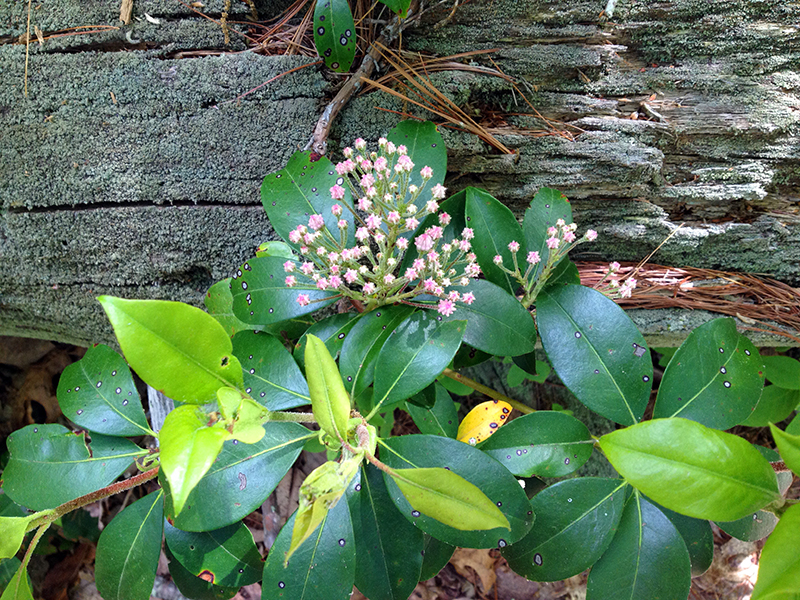
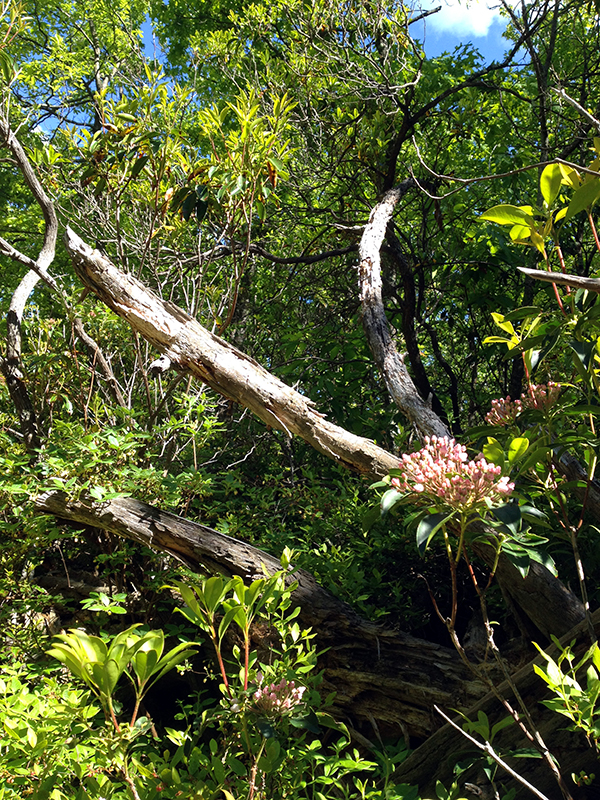
I was delighted to see several thriving clumps of pink lady slippers. These native orchids take many years to go from seed to blooming maturity, and can live to be twenty or more years old. These couldn’t have been more perfect specimens.
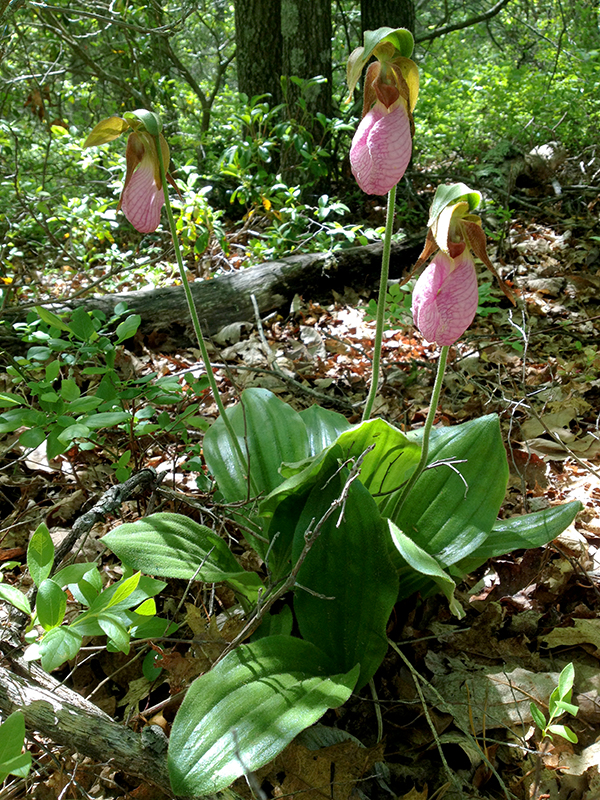
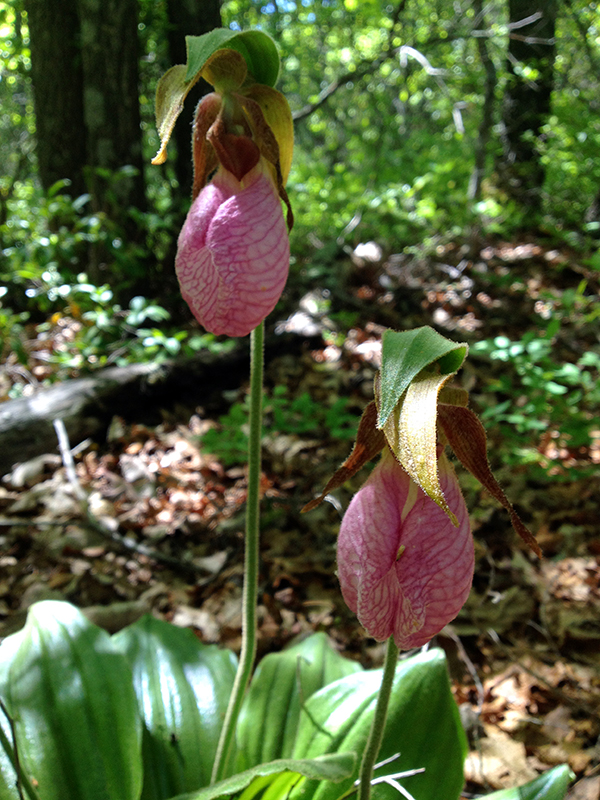
We traversed a lot of good creek and river crossings…

…which made me glad of my choice to hike in sandals, despite our dirty paws!
